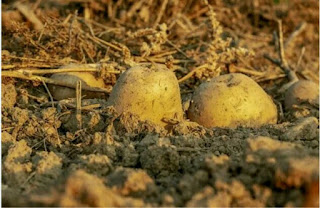Most Diseases of crops are caused by fungi , bacteria and virus. They infect certain plant organs and disrupt their functions. This gives rise to poor crop yields.
Some crop diseases:
Some common diseases of crop plants. We shall discuss generally the diseases caused by the various disease causing agents.
Fungal diseases:
Fungal crop diseases are very common in plants. Most disease causing fungi are microscopic and parasitic. Smut, rust, blight, root rot and downy mildew are fungal diseases.
Viral diseases
Viruses are parasites. The diseases they cause have varied symptoms. These include mosaic mottling (where the leaves have dark and light patches) , lessions, chlorosis, stunting and necrosis. Many plant virus infection are spread by insect vectors. For example, the mosaic causing virus is carried by aphids. The infection sets in at the start of flowering and causes considerable loss in yield to crops. Tobacco, cassava and garden egg are susceptible to this disease.
Bacteria Diseases:
These include bacterial blight, bacterial wilt , leaf spots, bacterial gails and soft rot.
Control of diseases
This is mainly done by preventing crops from becoming infected by disease causing agents and destroying the disease causing agents and the vectors that transmit them.
The government of an agricultural country must endure that no diseased plant or animal enters the country. All planting materials that are distributed to farmers must be disease free.
The important methods used in controlling diseases of crops are given below.
Physical methods : These methods include the removal of diseased plants if the infection is on a small scale. Weed hosts too should be removed. Bush burning and soil flooding are some of the other physical methods.
Cultural methods : usual farming practices are modified to destroy the disease causing agent. For example , if a plot of cassava affected by roots rot, a crop rotation scheme that does not include cassava for some time is adopted. This starves out the disease causing agent. In the case of bacterial wilt of cassava, control is carried out by early planting and the use of balanced fertilizers. This enables the plant to be well established before the peak period of infection. The older plant can resist the disease better than the younger ones. So the cassava yield is not affected appreciably. Planting resistant varieties also helps to control the disease.
Chemical methods
These method use chemicals which earlier eradicate the disease causing agents or protect the crops from such agents. They are the best method of disease control.
Note: vectors of Disease are got rid of by using the methods discussed under pest control.











